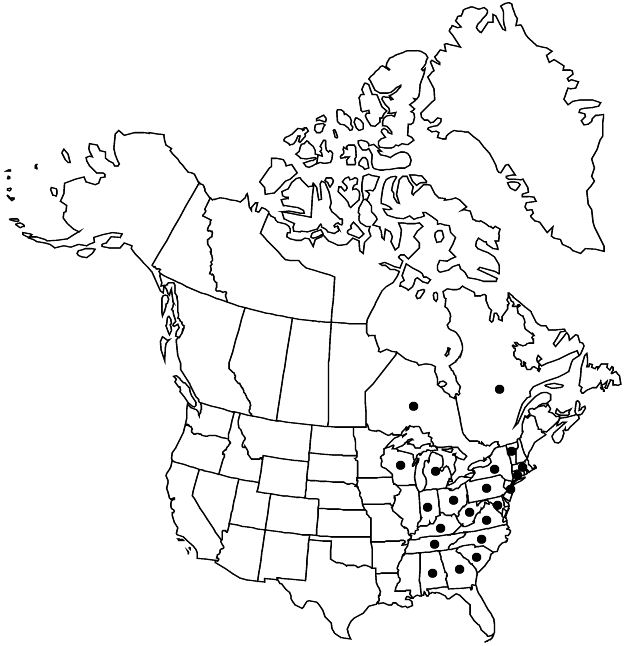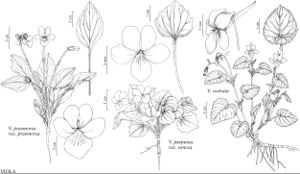Difference between revisions of "Viola rostrata"
Fl. Amer. Sept. 1: 174. 1813.
FNA>Volume Importer |
imported>Volume Importer |
||
| (2 intermediate revisions by 2 users not shown) | |||
| Line 56: | Line 56: | ||
|publication year=1813 | |publication year=1813 | ||
|special status=Illustrated | |special status=Illustrated | ||
| − | |source xml=https:// | + | |source xml=https://bitbucket.org/aafc-mbb/fna-data-curation/src/2e0870ddd59836b60bcf96646a41e87ea5a5943a/coarse_grained_fna_xml/V6/V6_275.xml |
|genus=Viola | |genus=Viola | ||
|species=Viola rostrata | |species=Viola rostrata | ||
Latest revision as of 22:20, 5 November 2020
Plants perennial, caulescent, not stoloniferous, 5–20 cm. Stems 1–7, ascending to erect (often declining during anthesis), glabrous, on caudex from fleshy rhizome. Leaves basal and cauline; basal: 1–5; stipules lanceolate, margins laciniate, apex acute; petiole 1–9.6 cm, glabrous; blade sometimes purple-spotted abaxially and/or adaxially, reniform to ovate, 1–4.5 × 1–4 cm, base broadly cordate to cordate, margins crenate to serrate, mostly eciliate, apex obtuse to acute, surfaces usually pubescent, mostly adaxially toward base, sometimes glabrous; cauline similar to basal except: petiole 0.4–4 cm; distal cauline blades ovate to deltate, 1–4.5 × 1–4 cm, base cordate, apex acuminate to acute. Peduncles 5–9 cm, usually glabrous. Flowers: sepals lanceolate, margins eciliate, auricles 1–2 mm; petals pale lavender-violet on both surfaces, all white basally, lower 3 purple-black-veined, all beardless, lowest 8–20 mm, spur white, purple, or lavender-tinged, elongated, 10–20 mm; style head beardless; cleistogamous flowers axillary. Capsules ellipsoid, 4–6 mm, glabrous. Seeds beige to bronze, 1.3–2 mm. 2n = 20.
Phenology: Flowering Apr–May.
Habitat: Rich, mesic to dry, well-drained woodlands, mountains
Elevation: 200–1800 m
Distribution

Ont., Que., Ala., Conn., Ga., Ind., Ky., Md., Mass., Mich., N.J., N.Y., N.C., Ohio, Pa., S.C., Tenn., Vt., Va., W.Va., Wis., e Asia (Japan).
Discussion
Viola rostrata has the longest spur of any North American Viola species.
Viola rostrata reportedly hybridizes with V. labradorica (= V. ×malteana House) and V. striata (= V. ×brauniae Grover ex Cooperrider).
Selected References
None.
